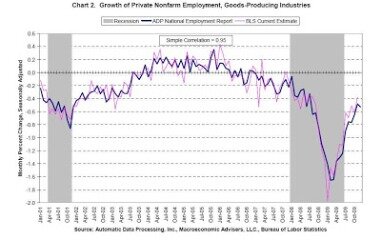This adjustment ensures that investors and stakeholders are not misled by inflated asset values, fostering greater transparency and trust. The allowance for doubtful accounts is a contra-asset account that reduces the total accounts receivable reported on the balance sheet. This adjustment is necessary to reflect the realistic collectible amount, ensuring that the financial statements are not overly optimistic. The process begins with identifying the accounts that are likely to become uncollectible. This involves analyzing historical data, customer creditworthiness, and current economic conditions. Businesses apply a percentage to their outstanding receivables to estimate potential bad debts.
- The balance sheet will now report Accounts Receivable of $120,500 less the Allowance for Doubtful Accounts of $10,000, for a net amount of $110,500.
- The allowance for doubtful accounts, also known as bad debt reserve, is essentially a contra-asset account linked to accounts receivable.
- For instance, if a business sees that an average of 3% of its accounts receivable have gone unpaid in the last five years, they can use this figure to predict future bad debts.
As time passes, companies gain better information about which accounts might not be collected. Economic conditions change, customer payment patterns evolve, and the receivables balance fluctuates. The balance sheet will now report Accounts Receivable of $120,500 less the Allowance for Doubtful Accounts of $10,000, for a net amount of $110,500. The income statement for the accounting period will report Bad Debts Expense of $10,000. If the allowance is less than the amount of these overdue receivables, the allowance is probably insufficient.
Leverage technology to streamline allowance for doubtful accounts processes
Adjusting the allowance for doubtful accounts is important in maintaining accurate financial statements and assessing financial risk. A company with a well-maintained allowance for doubtful accounts shows it has a firm grasp on financial management. Transparent reporting of potential losses, rather than ignoring them, portrays a business as responsible and forward-thinking. Under the Aging of Accounts Receivable Method, a company creates an estimate of bad debts based on the age of outstanding invoices.
Accounting for Allowance for Doubtful Accounts
You will need to adjust the accounts receivable balance on the balance sheet downwards to reflect the higher amount of uncollectible accounts. The allowance for bad debt always reflects the current balance of loans that are expected to default, and the balance is adjusted over time to show that balance. Suppose that a lender estimates $2 million of the loan balance is at risk of default, and the allowance account already has a $1 million balance. In business, not all customers who purchase goods or services on credit are able to fulfill their payment obligations. This allowance estimates the portion of accounts receivable (AR) that may not be collected. By accounting for potential losses in advance, businesses ensure their financial statements reflect a more accurate and conservative view of their receivables and future cash flows.
What is the Allowance Method?
This method is particularly useful for businesses with consistent sales patterns and stable customer bases. Incorporating an allowance for doubtful accounts is vital for transparent financial reporting. It helps businesses present a more accurate picture of their financial health to stakeholders, including investors and lenders.
Recording the amount here allows the management of a company to immediately see the extent of the expected bad debt, and how much it is offsetting the company’s account receivables. Bad debt should be written off when it is determined that a specific account receivable is uncollectible. This decision is typically made after exhausting all reasonable collection efforts and assessing the customer’s financial situation. Explore the components, estimation methods, and financial impact of the allowance for doubtful accounts in this comprehensive guide. As a result, the estimated allowance for doubtful accounts for the high-risk group is $25,000 ($500,000 x 5%), while it’s $15,000 ($1,500,000 x 1%) for the low-risk group.
How to Use the Aging of Accounts Receivable Method for Bad Debts
Doubtful accounts are past-due invoices that your business does not expect to actually collect on before the end of the accounting period. In other words, doubtful accounts are an estimated percentage of accounts receivable that aren’t likely to ever hit your bank account. After a certain period of time going uncollected, a doubtful account can become a bad debt, which is ultimately a cost that’s absorbed by your business.
For example, a retail business analyzing five years of data might discover that about 2% of credit sales typically go unpaid. If this quarter’s credit sales total $500,000, it would record a $10,000 addition to the allowance for doubtful accounts and a corresponding $10,000 bad debt expense. When the allowance account is used, the company is anticipating that some accounts will be uncollectible in advance of knowing the specific account. When a specific account is identified as uncollectible, the Allowance for Doubtful Accounts should be debited and Accounts Receivable should be credited. The only impact that the allowance for doubtful accounts has on the income statement is the initial charge to bad debt expense when the allowance is initially funded. Any subsequent write-offs of accounts receivable against the allowance for doubtful accounts only impact the balance sheet.
Each method provides a different approach to calculating potential bad debts, allowing businesses to choose the one that best fits their needs. Prompt follow-ups on overdue accounts and offering incentives for early payments also reduce the likelihood of defaults. Additionally, robust training programs and clear procedures ensure that staff are equipped to manage receivables effectively. Automation further enhances the efficiency of managing doubtful accounts by streamlining processes such as data collection, receivables monitoring, and report generation. Automated systems can flag overdue accounts, calculate allowances, and update financial records without manual intervention.
The allowance for doubtful accounts is a contra asset account, and so is listed as a deduction immediately below the accounts receivable line item in the balance sheet. It may be aggregated into the accounts receivable line item, whereby it is not stated separately. Without an allowance for doubtful accounts, businesses can unintentionally overstate their assets. Imagine reporting that your company has $200,000 in accounts receivable, but in reality, 10% of those invoices will likely never be paid. Accruing tax liabilities in accounting involves recognizing and recording taxes that a company owes but has not yet paid. What we are showing on the Balance Sheet is the full value of Accounts Receivable and the realistic value of what we expect to collect of that amount.
By including it on the balance sheet, we help you maintain financial accuracy and clarity. An allowance for doubtful accounts is a technique used by a business to show the total amount from the goods or products it has sold that it does not expect to receive payments for. This allowance is deducted against the accounts receivable amount, on the balance sheet. With accounting software like QuickBooks, you can access important insights, including your allowance for doubtful accounts.
Methods for estimating allowance for doubtful accounts
The amount is reflected on a company’s balance sheet as “Allowance For Doubtful Accounts”, in the assets section, directly below the “Accounts Receivable” line item. An allowance for doubtful accounts is also referred to as a contra asset, because it’s either valued at zero or it has a credit balance. In this context, the contra asset would be deducted what kind of account is allowance for doubtful accounts from your accounts receivable assets and would be considered a write-off.
Estimation Accuracy
- By categorising receivables based on their due dates, these reports help identify potential risks and prioritise collection efforts.
- Auditors also assess the reasonableness of the assumptions made, such as the percentages applied in the estimation methods and the categorisation of receivables based on their age.
- For example, machine learning algorithms can analyze historical data to forecast future bad debt trends, allowing businesses to adjust their strategies accordingly.
- For example, if 3% of invoices that are 90 days past due are considered uncollectible, you can assume that 97% of the invoices in this age group will be paid.
- Incorporating an allowance for doubtful accounts ensures that financial statements present a realistic view of a company’s receivables.
Short-term receivables are valued at their net realizable value—the amount the company expects to collect in cash. This valuation requires estimating uncollectible receivables and any returns or allowances. By setting up an allowance for doubtful accounts, companies take a proactive approach to managing this risk, ensuring that they’re prepared for worst-case scenarios. A company uses the Accounts Receivable Aging Report to determine the amount of the estimate for Allowance for Doubtful Accounts. A percentage is applied to each column based on the company’s previous experience with bad debts. The percentages are applied to each column to determine the total estimate for the current month.

